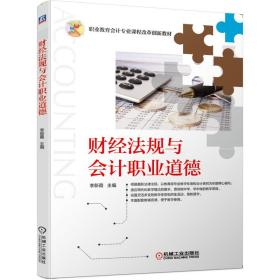
正版现货新书 Density Matrix and Tensor Network Renorm 9787301353875 向涛 著 著
全新正版现货,以书名为准,放心购买,购书咨询18931383650朱老师
¥ 106.86 6.8折 ¥ 158 全新
库存11件
北京丰台
认证卖家担保交易快速发货售后保障
作者向涛 著 著
出版社北京大学出版社
ISBN9787301353875
出版时间2024-09
装帧平装
开本16开
定价158元
货号1203395723
上书时间2024-10-29
- 在售商品 暂无
- 平均发货时间 9小时
- 好评率 暂无
- 最新上架
商品详情
- 品相描述:全新
- 商品描述
-
作者简介
向涛 中国科学院物理研究所研究员,中国科学院院士、发展中国家科学院院士,北京量子信息科学研究院院长。1984年本科毕业于清华大学,1986年在清华大学获得硕士学位,1990年在中国科学院理论物理研究所获得博士学位。《中国物理快报》主编。从事凝聚态物理,特别是强关联量子问题的理论研究。
目录
Contents
Preface
Unit Used
Notations and Graphical Representations
List of Abbreviations
Introduction
1.1 Quantum Many-Body Problems
1.2 From NRG to DMRG
1.3 From DMRG to Tensor Network Algorithms
1.4 Applications
2 Basic Algebra of Tensors
2.1 Diagrammatic Representation of Tensors
2.2 QR and LQ Decompositions
2.3 LU Decomposition with Partial Pivoting
2.4 Singular Value Decomposition
2.5 Polar Decomposition
2.6 Higher-Order Singular Value Decomposition
2.7 Low-Rank Approximation of Tensors
2.8 Automatic Differentiation
2.9 Trotter-Suzuki Decomposition
3 Tensor Network Representation of Classical Statistical Models
3.1 Tensor Network Models
3.2 Matrix-Network Models
3.3 Tensor Network Representation in the Original Lattice
3.4 Tensor Network Representation in the Dual Space
3.5 Vertex-Sharing Lattice Models
3.6 Duality Properties of Tensor Network Models
4 Tensor Network Representation of Operators
2 Notations and Graphical Representations
4.1 Matrix Product Operators (MPO)
4.2 Imaginary Time Evolution Operato
4.3 Quantum Transfer Matrix
4.4 MPO Representation of Quantum Transfer Matrix
5 Tensor Network Ansatz ofWave Functions
5.1 Area Law of Entanglement Entropy
5.2 Matrix Product States (MPS)
5.3 One-Dimensional AKLT States
5.4 Multiscale Entanglement Renormalization Ansatz (MERA)
5.5 Projected Entangled Pair State (PEPS)
5.6 Projected Entangled Simplex State (PESS)
6 Criterion of Truncation: Symmetric Systems
6.1 Density Matrix
6.2 Reduced Density Matrix
6.3 Schmidt Decomposition
6.4 Variational Approach
6.5 Edge and Bond Density Matrices
7 Real-Space DMRG
7.1 Two Kinds of Algorithms
7.2 DMRG in the MPO Language
7.3 Error Analysis
7.4 Heisenberg Spin Chains
7.5 Periodic System
7.6 Multiple Target States
7.7 Two-Dimensional Systems
8 Implementation of Symmetries
8.1 Symmetry Consideration
8.2 Continuous Abelian Symmetries
8.3 Spin Reflection Symmetry
8.4 Spatial Reflection Symmetry
8.5 Non-Abelian Symmetries
9 DMRG with Nonlocal Basis States
9.1 General Consideration
9.2 Momentum-Space DMRG
9.3 DMRG in a General Basis Space
9.4 Optimization of Single-Particle Basis States
9.5 Optimizing Active Basis Space
Notations and Graphical Representations 3
10 Matrix Product States
10.1 The DMRG Wave Function
10.2 Canonical Representations
10.3 Canonical Transformation
10.4 Implementation of Symmetries
11 Infinite Matrix Product States
11.1 Translation Invariant MPS
11.2 Transfer Matrix and Canonical Transformation
11.3 Expectation Values of Physical Observables
11.4 String Order Parameter
11.5 MPS with a Finite Unit Cell
12 Determination of MPS
12.1 Variational Optimization
12.2 Excited states
12.3 Imaginary Time Evolution
12.4 Purification
13 Continuous Matrix Product States
13.1 Lattice Discretization of Continuous Quantum Field Theory
13.2 Continuum limit of MPS
13.3 Expectation Values
13.4 Canonicalization
13.5 Determination of Continuous MPS
14 Classical Transfer Matrix Renormalization
14.1 Classical Transfer Matrix
14.2 TMRG
14.3 Fixed-Point MPS: One-site Approach
14.4 Fixed-Point MPS: Two-Site Approach
14.5 Corner Transfer Matrix Renormalization
15 Criterion of Truncation: Nonsymmetric Systems
15.1 Nonsymmetric Density Matrix
15.2 Transformation Matrices
15.3 Canonicalization of the Transformation Matrices
15.4 Biorthonormalization
15.5 Low-Rank Approximation to the Environment Density Matrix
16 Renormalization of Quantum Transfer Matrices
16.1 Quantum Transfer Matrix and Thermodynamics
16.2 Correlation Functions
4 Notations and Graphical Representations
16.3 QTMRG
16.4 Thermodynamics of the Heisenberg Spin Chain
17 MPS Solution of QTMRG
17.1 Biorthonormal MPS
17.2 Biorthonormalization
17.3 Fixed-Point Equations
17.4 Translation Invariant System with a Finite Unit Cell
18 Dynamical Correlation Functions
18.1 Spectral Functions
18.2 Continued-Fraction Expansion
18.3 Dynamical Moments
18.4 Lanczos-DMRG Method
18.5 Dynamical Calculations with MPS
18.6 Correction-Vector Method
18.7 Spin Structure Factor of the Heisenberg Model
19 Time-Dependent Methods
19.1 Pace-Keeping DMRG
19.2 Time-Evolving Block Decimation
19.3 Adaptive Time-Dependent DMRG
19.4 Folded Transfer Matrix Method
20 Tangent-Space Approaches
20.1 Tangent Vectors of Uniform MPS
20.2 Time-Dependent Variational Principle
20.3 Single-mode excitations
20.4 Excitations Represented with PEPS
21 Tree Tensor Network States
21.1 Canonical Representation
21.2 Canonicalization
21.3 Husimi lattice
21.4 Determination of Tree Tensor Network State
21.5 Upper Bound of the Correlation Length
21.6 Thermodynamics
22 Two-Dimensional Tensor Network States
22.1 PEPS
22.2 Variational Optimization
22.3 Imaginary Time Evolution
22.4 Tensor Derivatives by Automatic Differentiation
Notations and Graphical Representations 5
22.5 Contraction of Double-Layer Tensor Networks
23 Coarse-Graining Tensor Renormalization
23.1 Coarse-Graining Approaches
23.2 TRG
23.3 Second Renormalized TRG
23.4 Determination of the Environment Tensor
23.5 Tensor Network Renormalization (TNR)
23.6 Loop Tensor Network Renormalization (Loop-TNR)
23.7 HOTRG
23.8 Second Renormalized HOTRG
23.9 Comparison of Different Methods
23.10 Three-Dimensional Classical Models
23.11 Two-Dimensional Quantum Lattice Models
Appendix A Other Numerical Methods
A.1 Power Method
A.2 Lanczos Method
A.3 Conjugate Gradient Method
A.4 Arnoldi Method
A.5 Quantum Monte Carlo Simulation
References
Index
内容摘要
本书介绍了过去三十年发展起来的张量网络态重正化群理论。本书首先介绍了张量网络态的分解和取值所需的张量代数基础。之后,本书又介绍了量子态的张量网络表示、量子算子、配分函数(例如矩阵乘积态)、投影纠缠对态等。
接下来,本书又介绍了密度矩阵重正化群(DMRG)及其各种拓展,比如动量空间DMRG、经典或量子跃迁矩阵重整化群方法、时间依赖DMRG、动力学DMRG等。
本书适合凝聚态物理,特别是张量网络态领域的科研工作者参考,也可用于初入此研究方向的青年学者学习。
主编推荐
本书是向涛院士著的张量网络态重正化群理论。
— 没有更多了 —












以下为对购买帮助不大的评价